The
Two RV Gypsies: Full-Time RVers
|
The Lime Creek Nature Center opened in 1984 as a conservation education facility serving North Iowa. It was funded exclusively by donations from private citizens, businesses, organizations, and foundations. The nature center programs are not tax funded; they rely on memberships and donations to continue their mission.A nine-mile network of trails dissects a 440-acre area of upland timber, open fields, restored prairie, flood-plain forest, and limestone bluffs; an ideal place for wildlife and a variety of recreational activities. The nature center houses displays, live and mounted animals, a natural resource library, and a gift shop. The Cerro Gordo County Conservation Board office is located in the nature center.Effective April 8, 2016. all designated trails at the Lime Creek Conservation Area are open to foot, horse and bicycle traffic. Canoes are allowed on Quarry lake. Other activities in the area include: biking, primitive camping, equestrian activities, fishing, picnicking, hiking on trails, and more. |
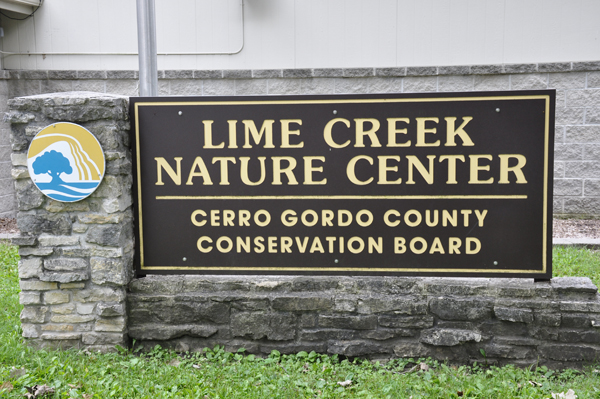 |
|
This was one of several turtles in the Visitor center that was constantly swimming into the glass because the aquarium it was in was too small. |
|
Below: The two RV Gypsies saw a sight that demanded a second look: A jeep parked in the parking lot at the Lime Creek Nature Center displayed an image that at first glance could be thought to be a person sleeping in the window. Very clever. |
|
 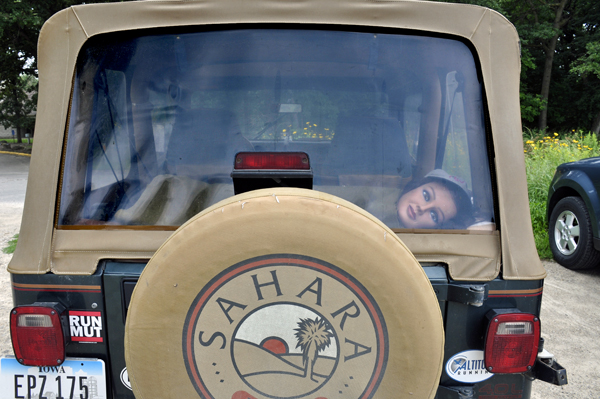  |
|
Below: The two RV Gypsies took a short hike on the bluffs trail. |
|
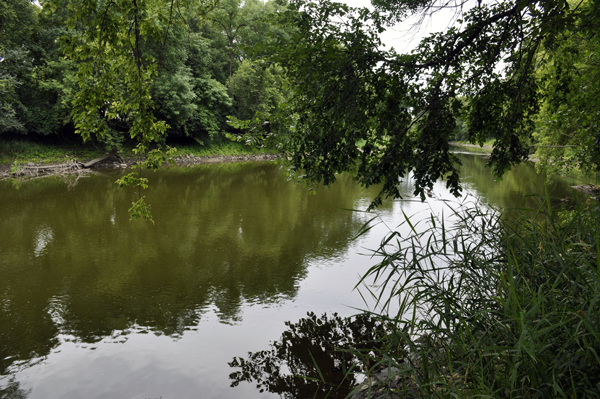 |
|
Along the trail, the two RV gypsies learned about Stromatoporoids, a class of aquatic invertebrates common in the fossil record from the Ordovician through the Devonian. They were especially abundant in the Silurian and Devonian. These invertebrates were important reef-formers throughout the Paleozoic and the Late Mesozoic. The group was previously thought to be related to the corals and placed in the Phylum Cnidaria. They are now classified in the sponges (Phylum Porifera), specifically the sclerosponges. There are numerous fossil forms with spherical, branching or encrusting skeletons of laminated calcite with vertical pillars between the laminae.Stromatoporoids are useful markers whose form and occurrence can diagnose the depositional environment of sedimentary strata. Paleozoic Stromatoporoids hosted various symbiotic endobionts such as rugosans, syringoporids, worms and cornulitids. |
|
Although the sign shown below about the Cottonwood Tree was very informative, the tree itself was just too large to photograph. |
|
Below: Although the two RV Gypsies enjoyed the Butterfly Garden area, they did not see any butterflies on this date. However, Karen Duquette took some pictures of flowers, bees, and a big wasp. |
|
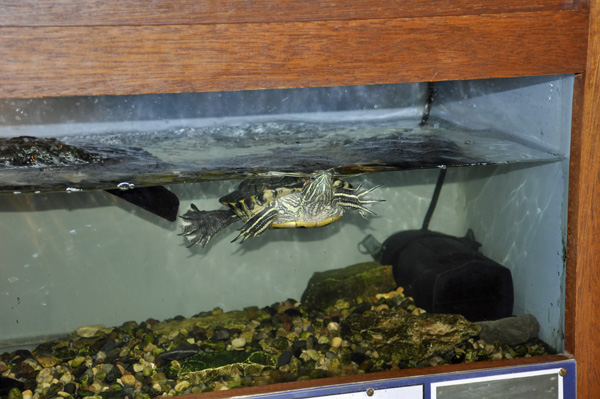
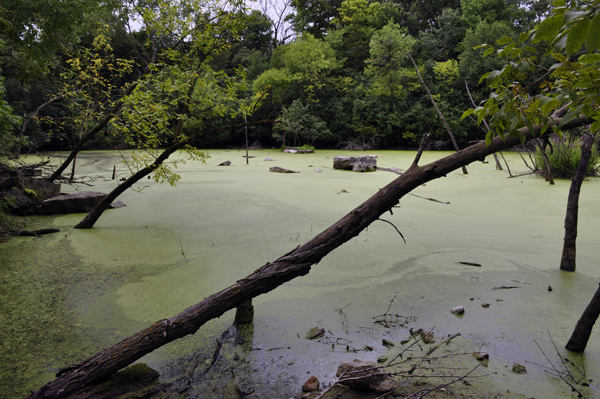
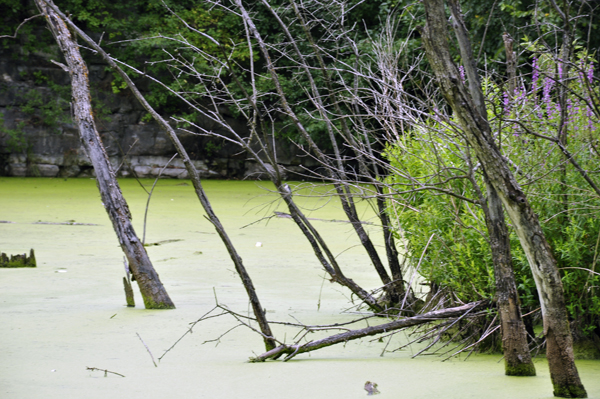


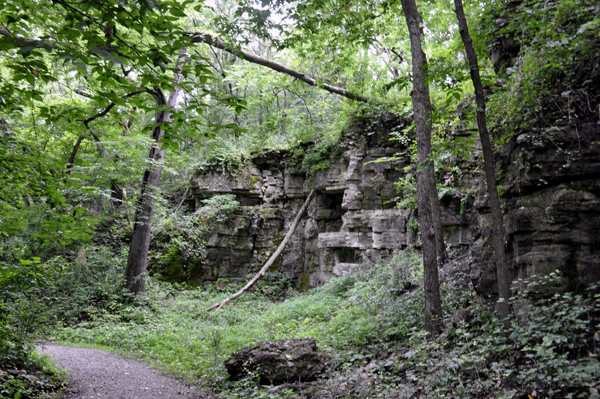
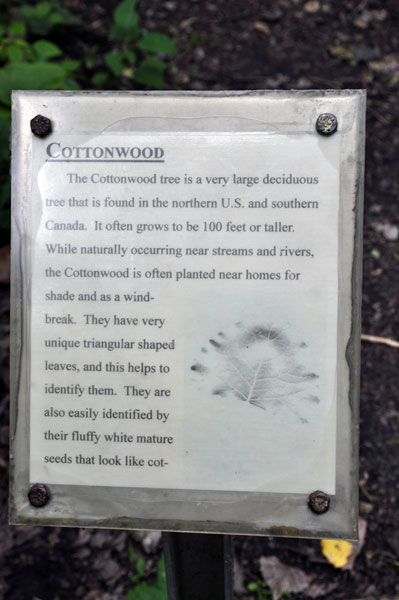
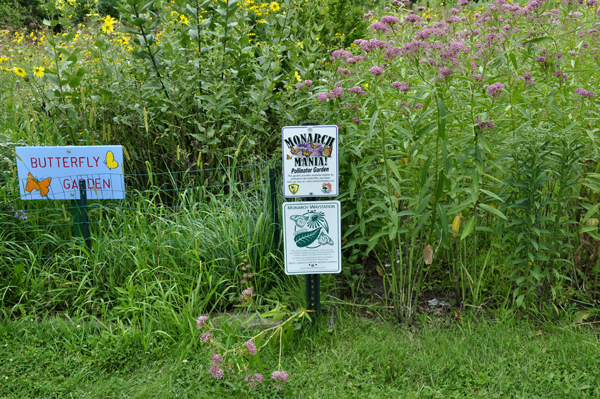
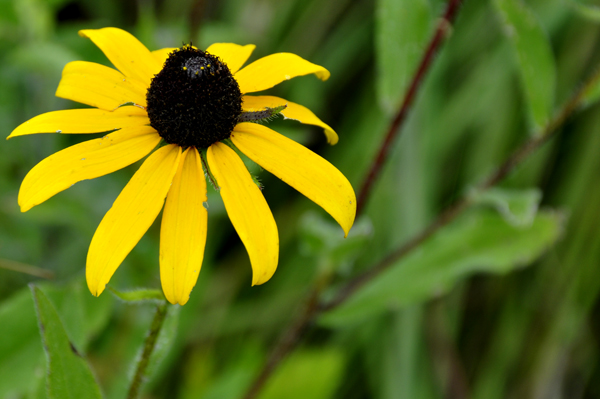
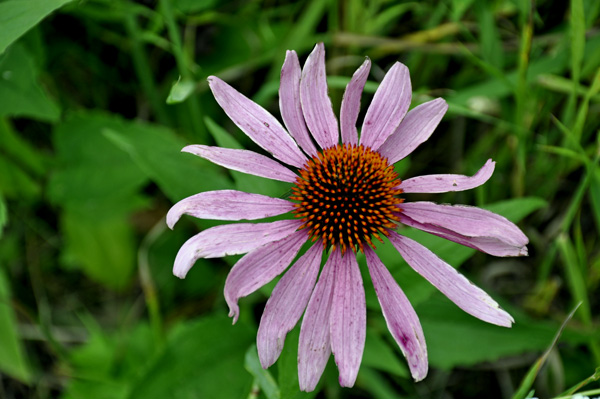
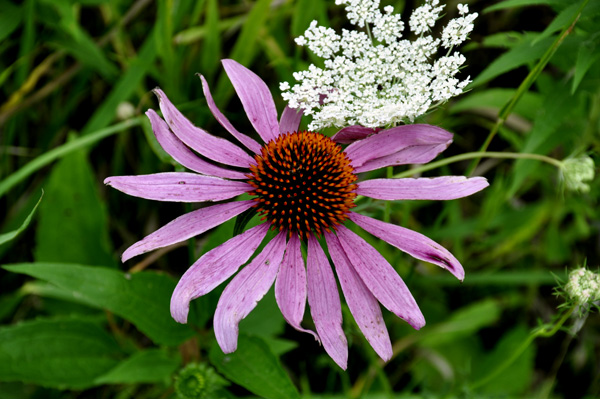
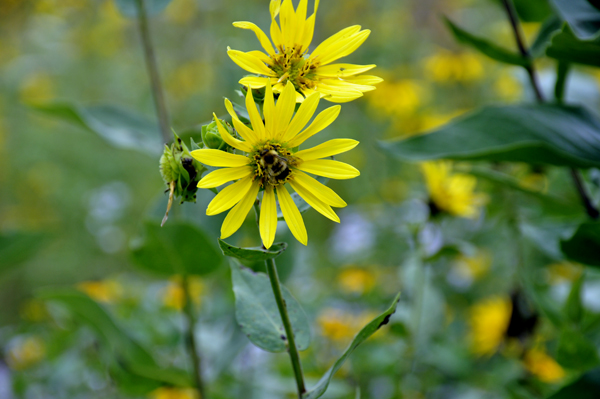
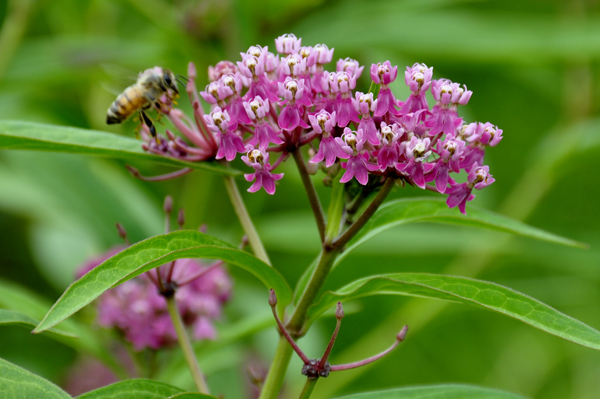
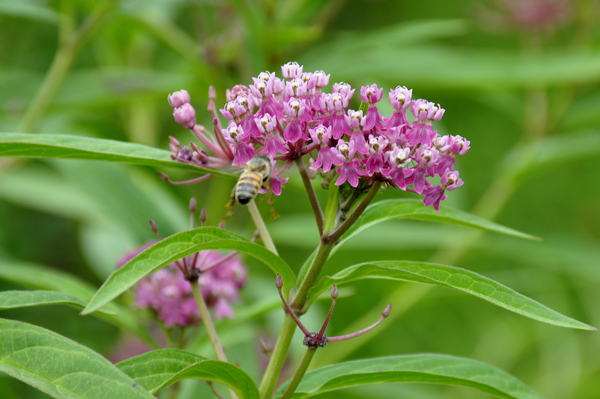
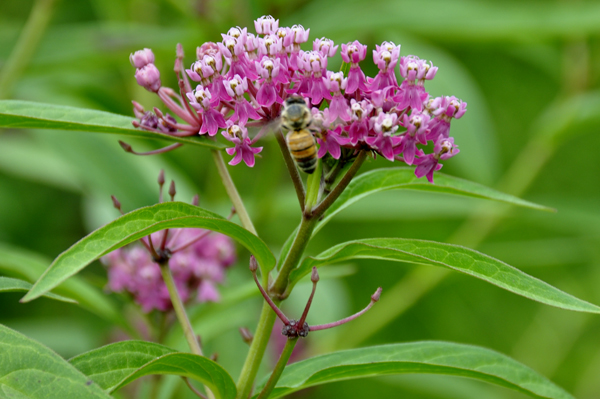

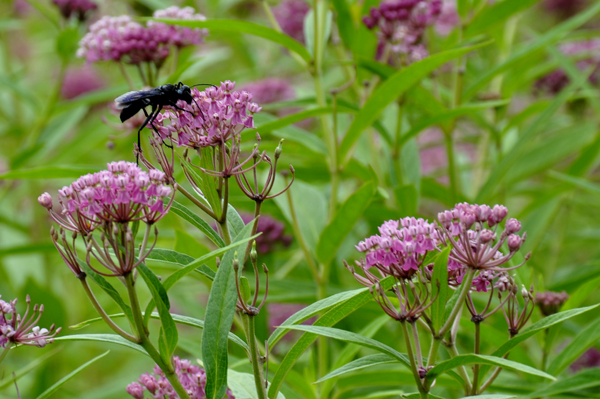
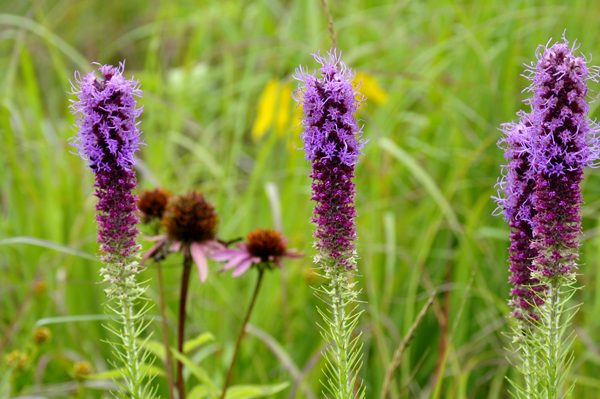
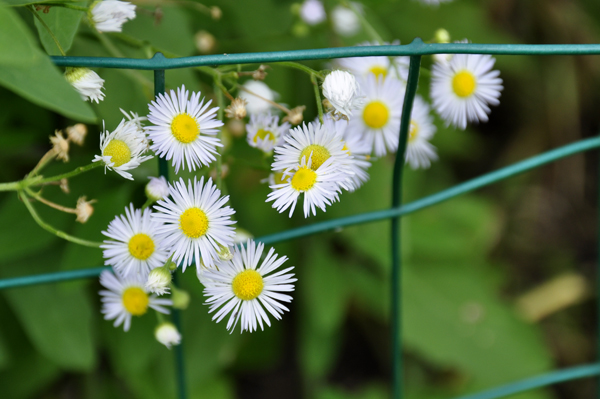
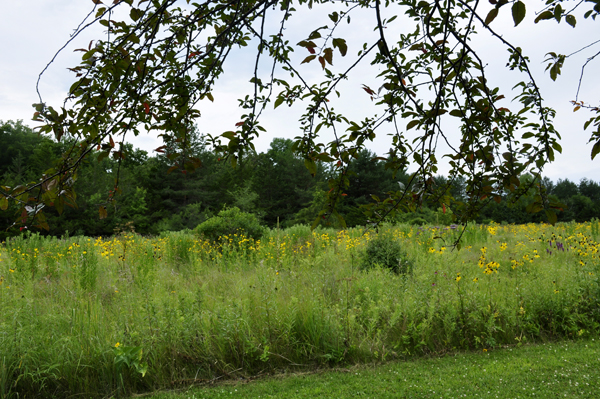

 Continue navigation in the order of occurrence -
Continue navigation in the order of occurrence - 























